Understanding Spices
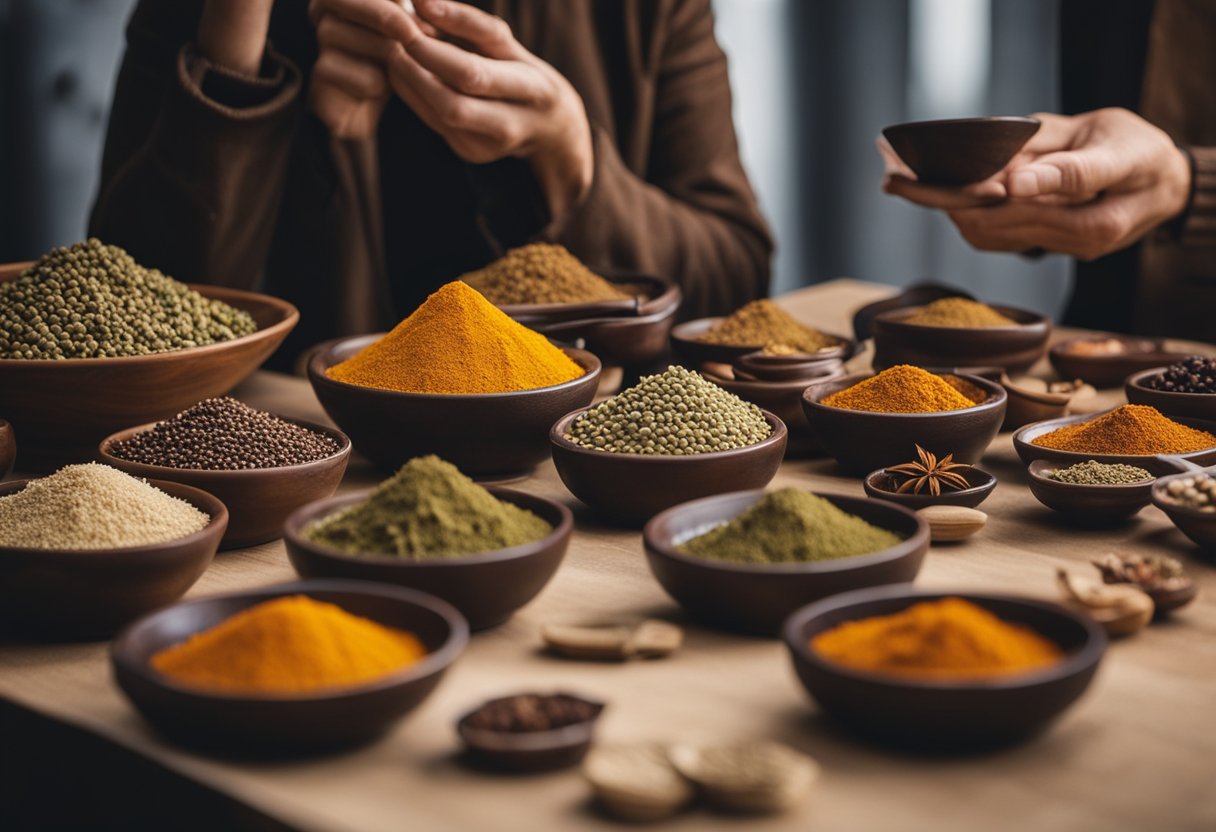
Tasting spices isn’t just about sensing heat or sweetness; it’s a delicate art. Your journey to master spice tasting will involve recognizing subtle flavors, distinct aromas, and the freshness that each spice brings to your palate.
Differentiating Spices by Taste
To distinguish between spices, you’ll need to tune into the specifics of their flavor profiles. Bold spices like paprika and cumin offer earthy notes, while zesty spices such as cardamom add a citrusy punch. Create a flavor wheel for reference, marking the heat, sweetness, bitterness, and savoriness on different axes.
The Role of Aroma in Spice Tasting
Spices release their aroma through volatile oils that are best experienced by smelling before tasting. Hold the spice near your nose and inhale to detect nuances; for instance, nutmeg should release a warm, woody scent. Write down these aromatic notes—the ‘nose’ of the spice—before tasting, to compare how the aroma converts to flavor.
Identifying Freshness and Potency
The potency of a spice is tied to its freshness, which can be assessed through both scent and sight. Check expiration dates and look for vibrant colors, which often indicate fresh spices. Crush a small part between your fingers; if it releases a strong scent immediately, it’s likely to still be potent. On the contrary, a weak aroma can signal it’s time for replacement.
Preparation for Spice Tasting
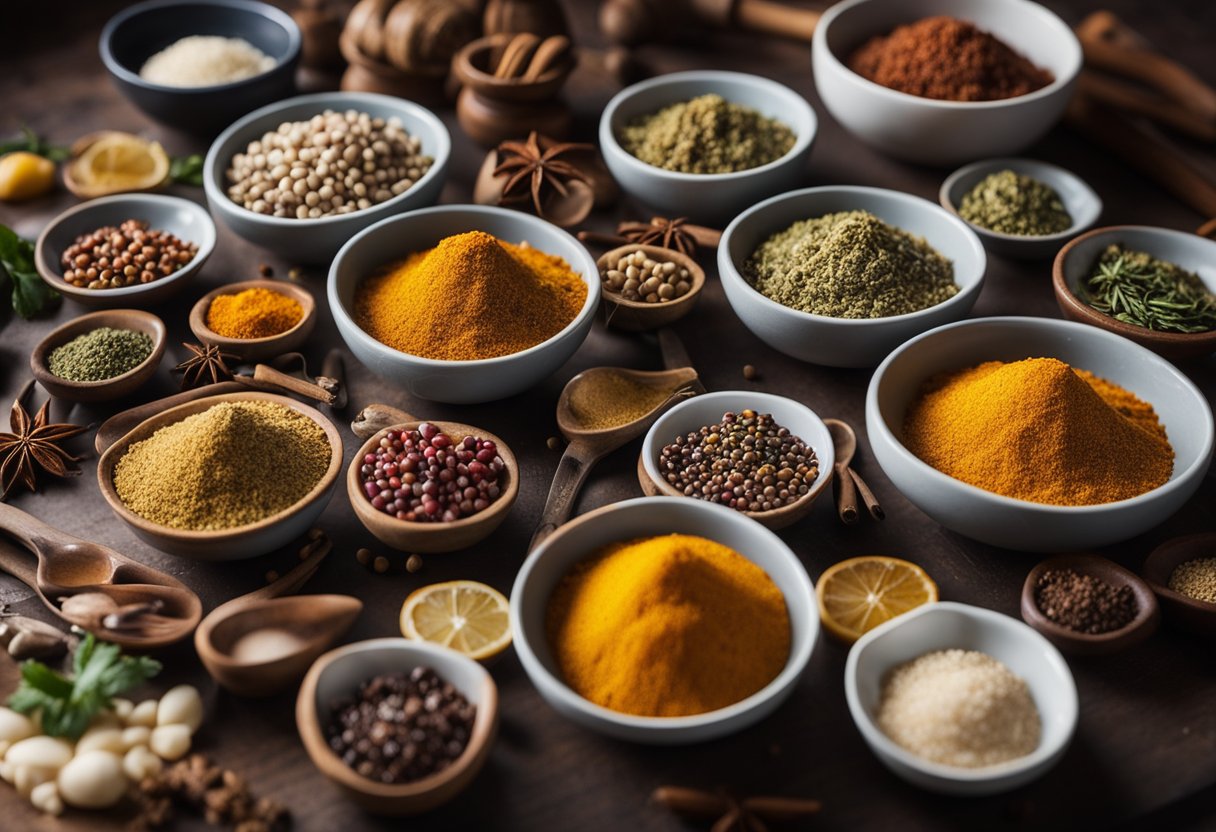
Before diving into the complex world of spices, it’s essential to set the stage for a successful tasting experience. Freshness and flavor retention are paramount, so let’s ensure you’re prepped and ready to evaluate spices like a pro.
Proper Storage to Preserve Flavor
Don’t let humidity become the nemesis of your spice collection. Store your spices in a cool, dry place, away from direct sunlight, and consider using air-tight containers to keep them potent. Keep whole spices on hand—they’ll retain their zest much longer than their ground counterparts.
Grinding Techniques for Maximum Freshness
Embrace the satisfaction of grinding spices just before tasting to unlock their full aromatic profile. A mortar and pestle work best for oils and textures that pre-ground spices can’t match. For a quick, even grind, a dedicated spice grinder is your go-to gadget; just make sure to clean it after each use.
Creating a Conducive Tasting Environment
Set the stage for your sensory journey in a space free of strong odors that could interfere with your perception. Neutral-colored dishes are ideal; they won’t distract your eyes from the vibrant hues of the spices. Remember, a calm environment allows your senses to focus solely on the subtle nuances of each spice.
Conducting the Taste Test
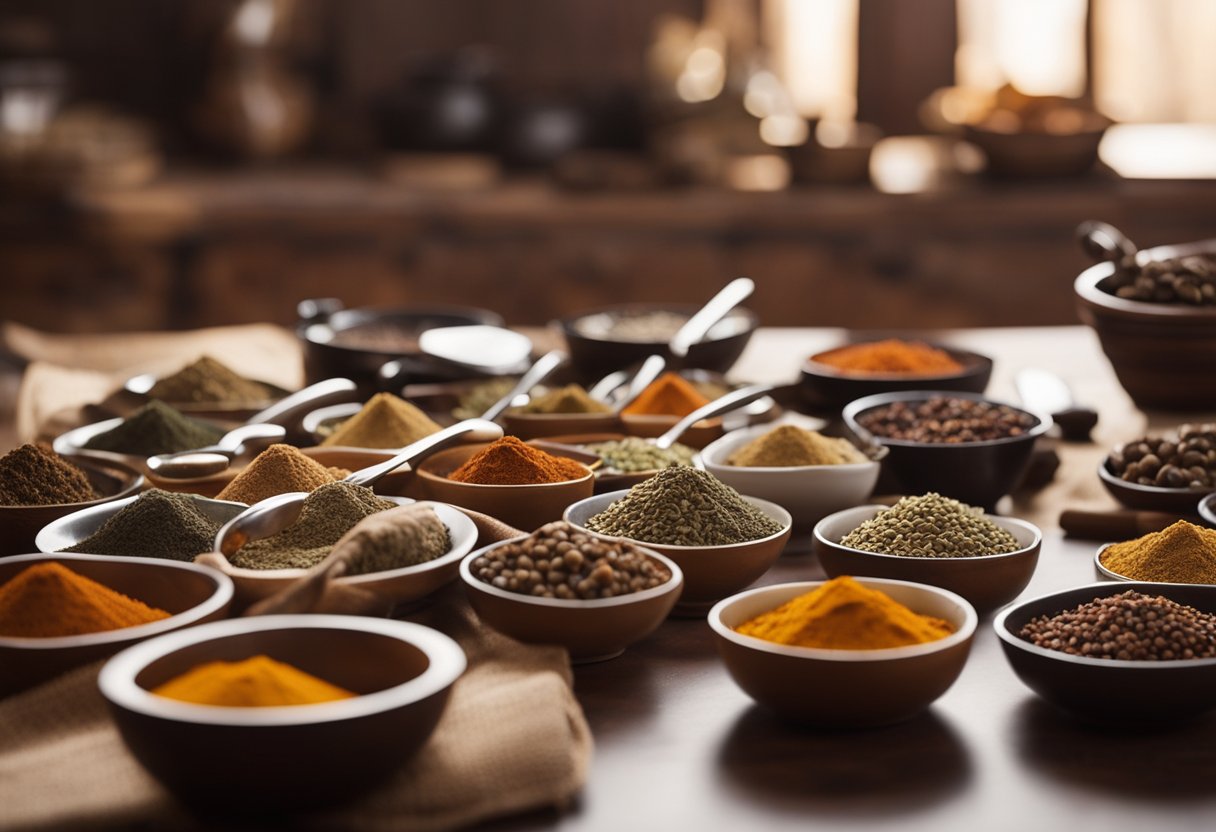
Embark on a flavorful journey by systematically sampling spices to understand their unique taste profiles and how they marry within recipes.
Tasting Individual Spices
Initiate your taste testing with individual spices. Begin with a small amount, about a pinch, and place it on your tongue. Pay attention to the immediate flavors and sensations, such as heat from chili or sweetness from cinnamon. Note the evolution of taste as it lingers, documenting each spice’s flavor profile in a notebook, which can include attributes like earthy, floral, smoky, or citrusy. This record will be your reference for recognizing spice characteristics when mixed with other ingredients.
Exploring Spice Combinations
After familiarizing yourself with single spices, it’s time to explore spice combinations. Combine spices you believe might complement each other based on their individual profiles. For instance, pair warm spices like nutmeg and clove or create a classic blend such as Italian seasoning. Start with equal parts, and adjust ratios based on your flavor preferences, witnessing how they amalgamate to form a more complex taste. Documenting these findings helps in perfecting homemade spice blends and understanding common pairings in different cuisines.
Using Spice in Recipes for Context
Finally, comprehend the role spices play within recipes by cooking simple dishes seasoned with your tested spices and blends. Cook a basic recipe, like rice or a brothy soup, and season it with an individual spice or one of your custom blends. This allows you to observe how the flavor profile changes in the presence of other ingredients and how it interacts with the overall dish. Consider how the seasoning enhances the dish, noting if it provides a background note or stands out as the main flavor, and tweak your spice usage accordingly to master the art of seasoning.
Analyzing Spice Profiles
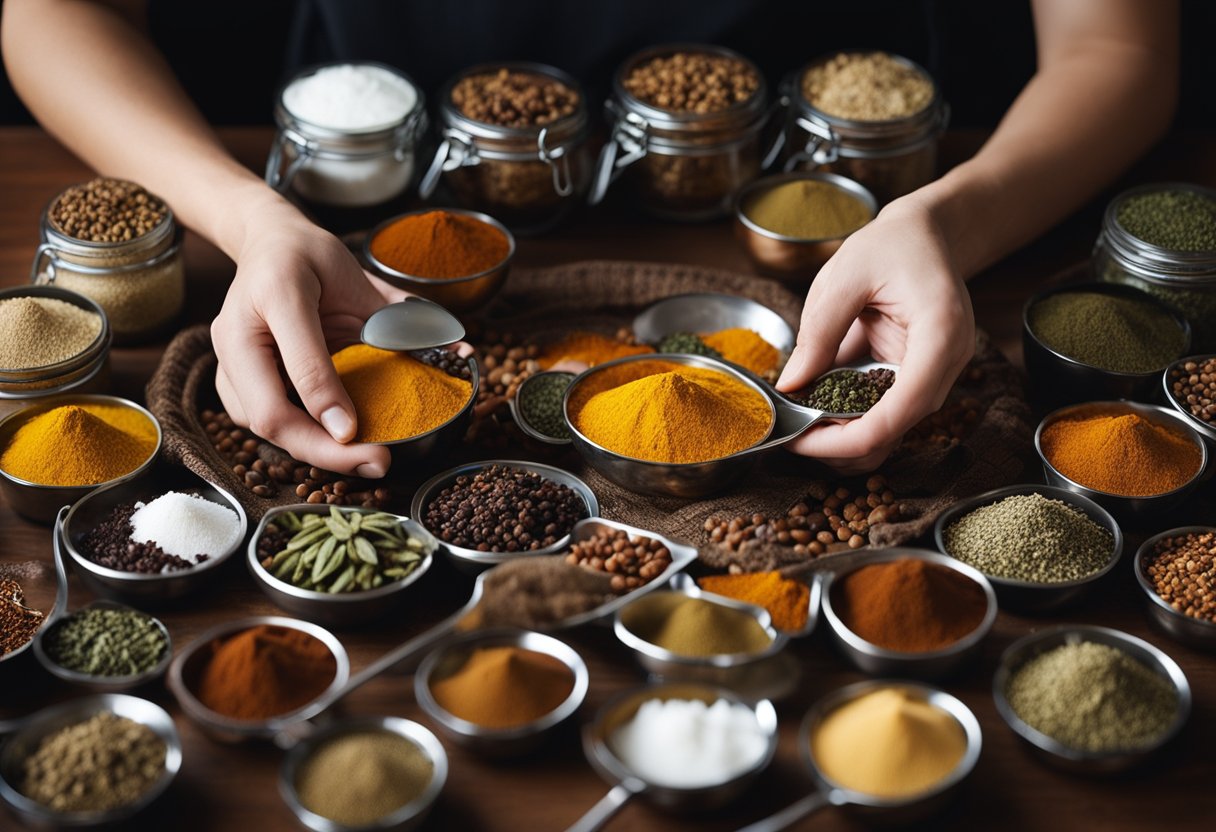
Taste testing spices goes beyond a simple sniff or pinch on the tongue. You’ll journey through subtle nuances and bold bursts as you pinpoint each flavor note.
Sweet and Earthy Notes
To detect sweet and earthy notes in spices like cinnamon or black pepper, start with a small sniff. The sweetness will often be the first to greet you, with earthy tones, like sage, rounding out the sensory experience.
Heat and Pungency
For heat and pungency, carefully gauge your spice, such as black pepper, on your palate. Begin with a tiny taste; feel the warmth spread, noting any sharp or smoky undertones.
Complexity and Balance
Identifying complex flavor requires attention to the harmony of spices. Explore blends like garam masala or Chinese five-spice powder; look for how the layers of flavor work together, considering the deliberate combination of spices for both contrast and complement.
Incorporating Spices into Cooking
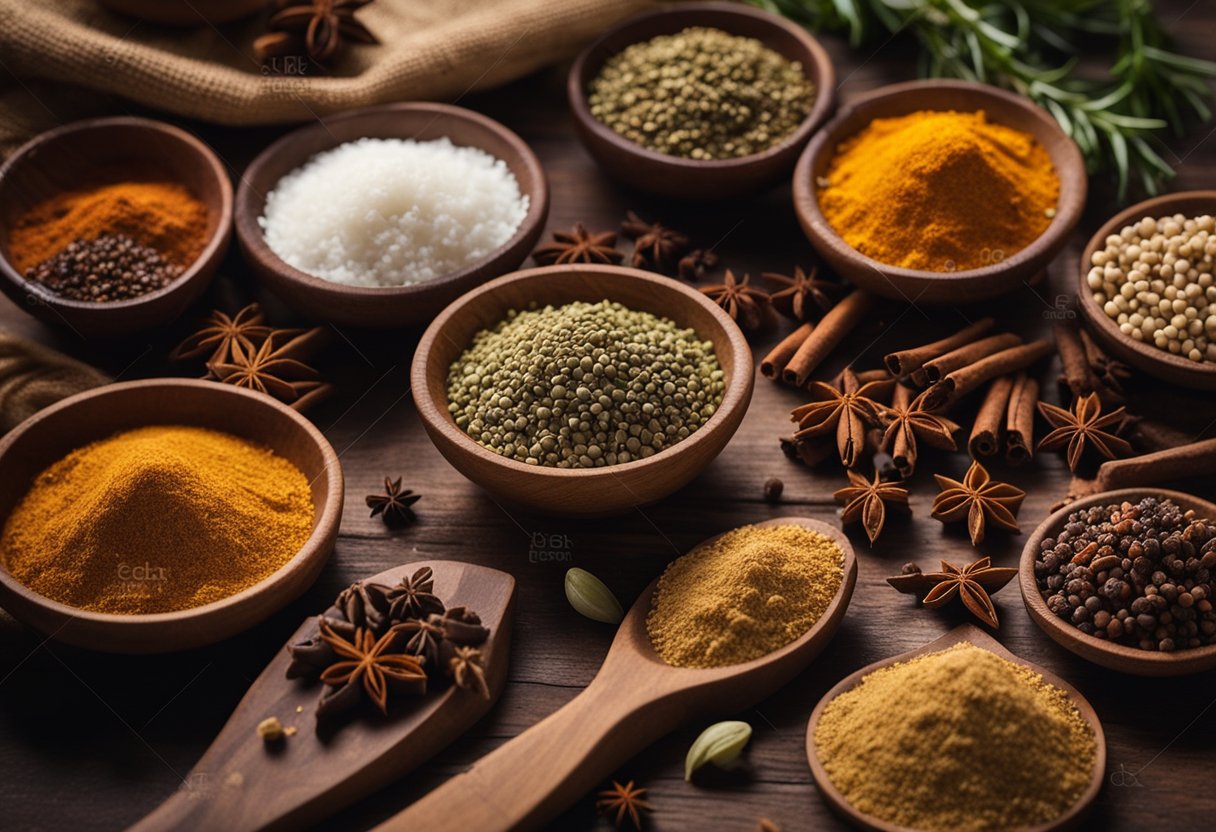
Spices add depth and excitement to your cooking, allowing you to transform plain ingredients into culinary masterpieces.
Experimenting with Culinary Techniques
You can use spices in various cooking methods to enhance flavor. Sprinkle ground coriander or cumin to add warmth to roasted vegetables. For meats, create a dry rub with a combination of turmeric and salt, which not only seasons but also gives a golden hue. Steeping fennel seeds in hot water brings out a sweet, anise-like taste, ideal for infusing in teas or broths.
Pairing Spices with Food
The art of pairing spices with food may seem complex, but it’s quite intuitive once you get the hang of it. Try incorporating cumin with its earthy notes into rice dishes or stews. Sichuan pepper, known for its unique tingling sensation, pairs well with proteins, enhancing the dish with a bold, piney flavor. If you’re in for a mild, nutty essence, poppy seed makes a delicate addition to baked goods and salad dressings.
Creating Signature Blends
Creating your own spice blends lets you tailor flavors to your taste. Start with a base like coriander for its citrus undertones, and build upon it. You can mix in turmeric for color and health benefits, or fennel seeds for a touch of sweetness. Experiment by adding various amounts until you find a balance that’s uniquely yours and perfect for sprinkling onto your chosen canvas – from marinades to finished dishes.
Frequently Asked Questions
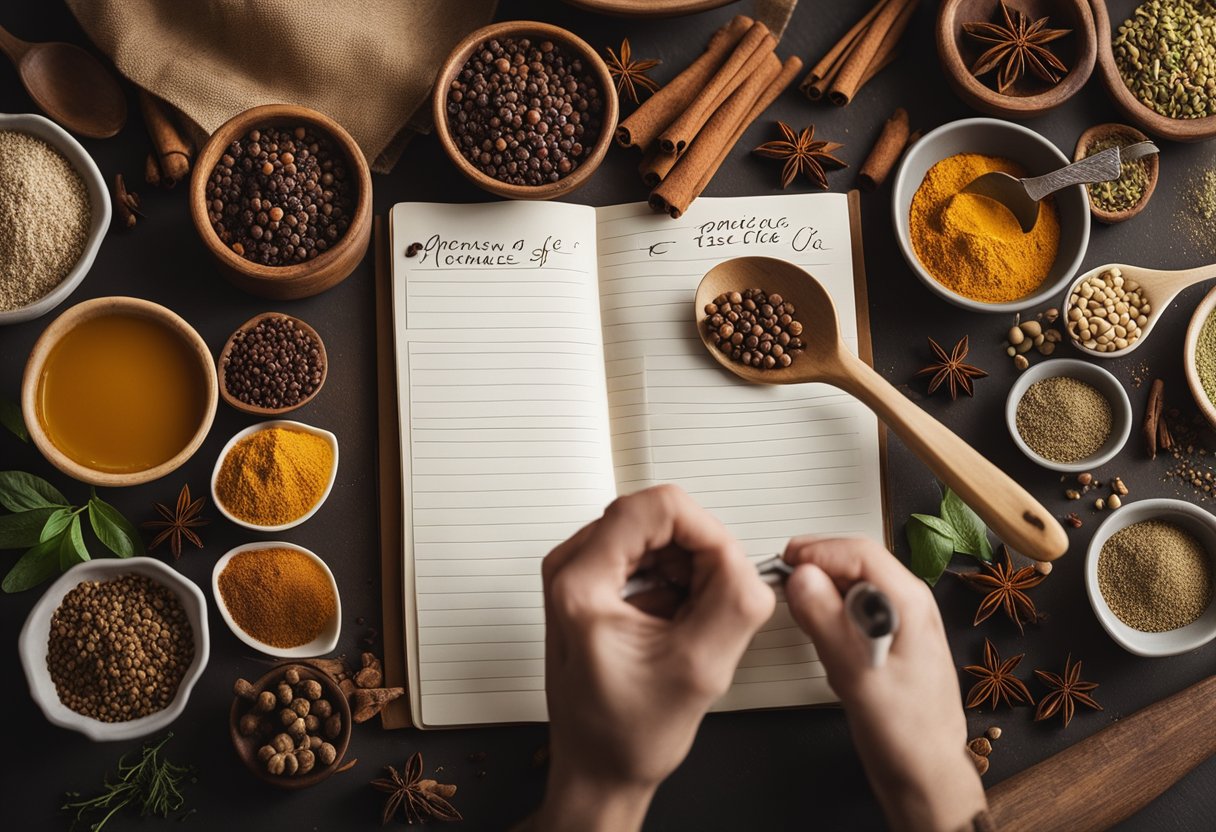
Exploring the world of spices can be a culinary adventure. These FAQs will guide you through the techniques and practices to enhance your spice tasting experiences.
What’s the best method for sampling a variety of seasonings?
Start with small quantities to avoid mixing flavors. Cleanse your palate with water or plain crackers between tastings to maintain the integrity of each spice’s profile.
Can you guide me through conducting a spice taste test?
Certainly! Arrange your spices from mild to bold. Taste each one independently, focusing on the initial flavor, the middle notes, and the finishing taste. Jot down your thoughts to compare and contrast later.
What are some tips for identifying different spices by taste?
Pay attention to the flavor notes: sweet, salty, sour, bitter, or umami. Also, try to detect if the spice has a warming or cooling effect on your palate which can be a great indicator of its identity.
How do professional chefs taste and evaluate spices?
Chefs often taste spices both raw and cooked to understand how their flavors develop with heat. They also consider the aroma before and after cooking as an essential part of evaluating a spice’s quality.
What should I look for when tasting spices to assess their quality?
Look for vibrancy in color, a strong aroma, and a full, complex flavor profile. The freshness of a spice can be determined by its potency and the delay before the flavor hits your taste buds.
Is there a proper technique to taste testing chillies without overwhelming my palate?
Absolutely! Start with the mildest chili and work your way up. Chew a small piece and wait for the heat to build up before reaching for water or milk, which can help soothe your palate.
